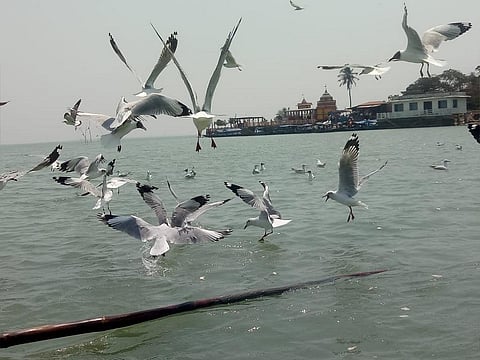

Chilika lake in Odisha, Asia’s biggest brackish water lagoon, saw an increase in the number of migratory birds this winter compared to the previous year. Experts cited several reasons for this, with Russia’s war in Ukraine being one among them.
In mid-winter, nearly 1.13 million birds of 184 different species were found in the lagoon, which spans an area of 1,100 square kilometres, according to a water bird survey conducted December 4, 2022.
This included 1.09 million migratory birds of 105 various species and 38,859 native birds of 79 species, said PK Panda, assistant conservator of forest, Chilika Wildlife Division (CWD).
In 2022, a total of 1.07 million birds of 183 species were found during the census, including 10,36,220 migratory birds of 107 and 37,953 native birds of 76 species, official sources said.
Enumerators have sighted a pair of River Lapwing (Vanellus duvaucelii), a tiny bird of the lapwing species, on the Mangalajodi side of the lake after a decade.
This migratory bird was last sighted in the Chilika in 2012, said an official of the CWD. The CWD, Chilika Development Authority and Bombay Natural History Society (BNHS) jointly carry out the annual bird census at the Ramsar site.
Over 130 enumerators, including bird experts, forest officials and wildlife activists, were involved in the assessment.
Also read: Irrawaddy dolphin found dead in Chilika
The highest number — 342,897 birds of different species, including 341,583 waterbirds and 1,314 native birds — was reported from the Nalabana bird sanctuary inside the lake, according to sources.
Gadwall and Northern Pintail contributed the most to the surge, followed by Eurasian Wingeon. The number of Northern Shoveler, Tufted Ducks and Red Crested Pochard increased compared to last year.
Habitat improvement, availability of food and eviction of the prawn gherries (enclosures) in the lake are some of the reasons for the increase, said PK Mishra, regional chief conservator of forest, Berhampur.
The disturbances caused by the war in Ukraine can also be a reason for this, he added.
Extreme cold in the Himalayan region is another reason for the increase in the number of birds, said Biswajit Mohanty, an environmentalist who took part in the bird count exercise.
This year, more birds visited the southern portion of the lake on the Rambha side in the Ganjam district than usual. This can be due to the eviction of prawn gheries, said Mohanty.
The bird population in the Chilika fluctuates every year, said Bivash Pandav, director of BNHS.
The birds mainly come from Northern Eurasia, the Caspian region, Siberia, Kazakh, Lake Baikal and the remote parts of Russia and its neighbouring countries.
They visit the lake every winter to escape the harsh weather in their native countries and in search of food. These birds start their homeward journey before the onset of summer.